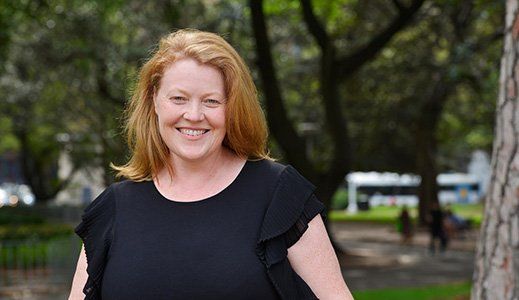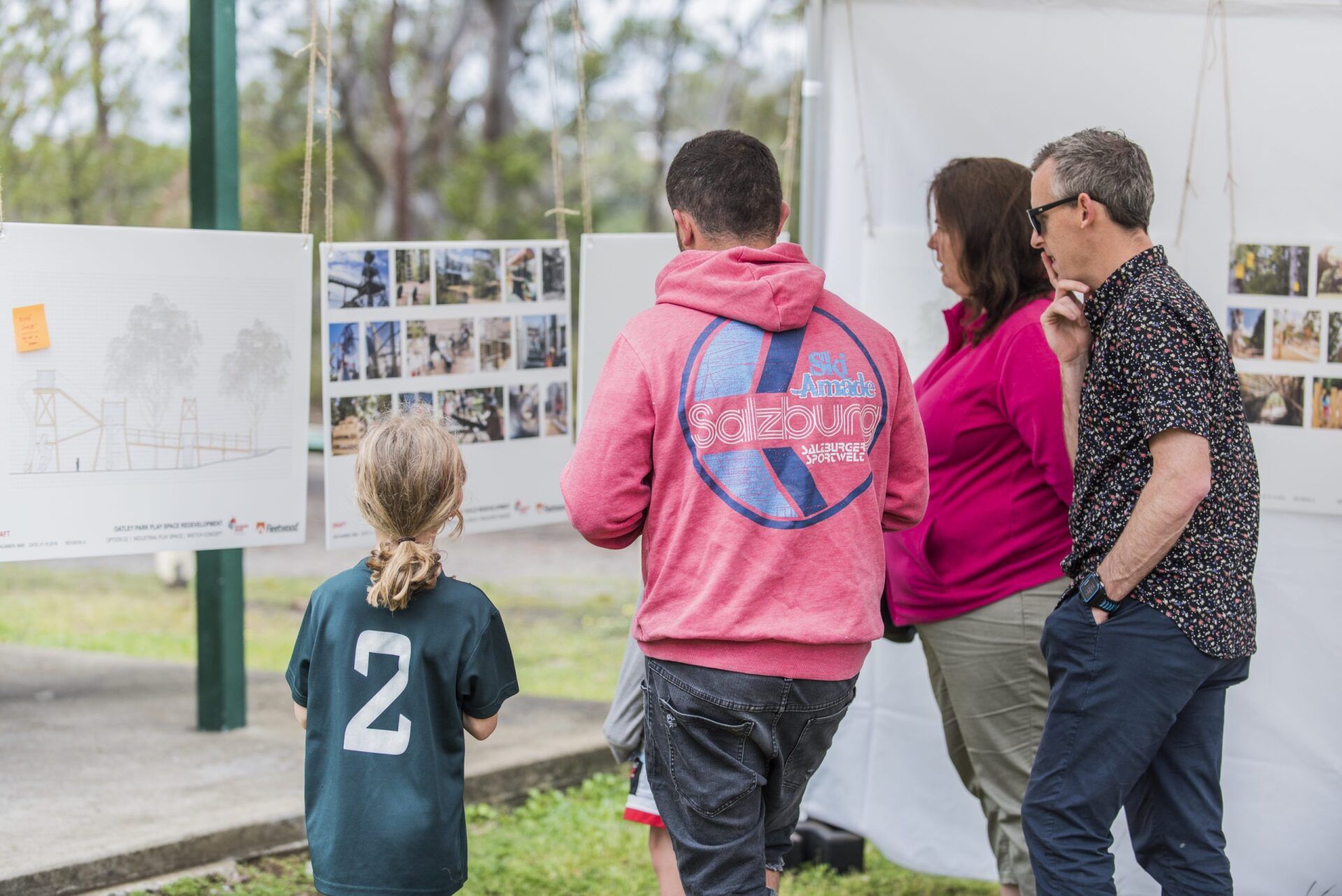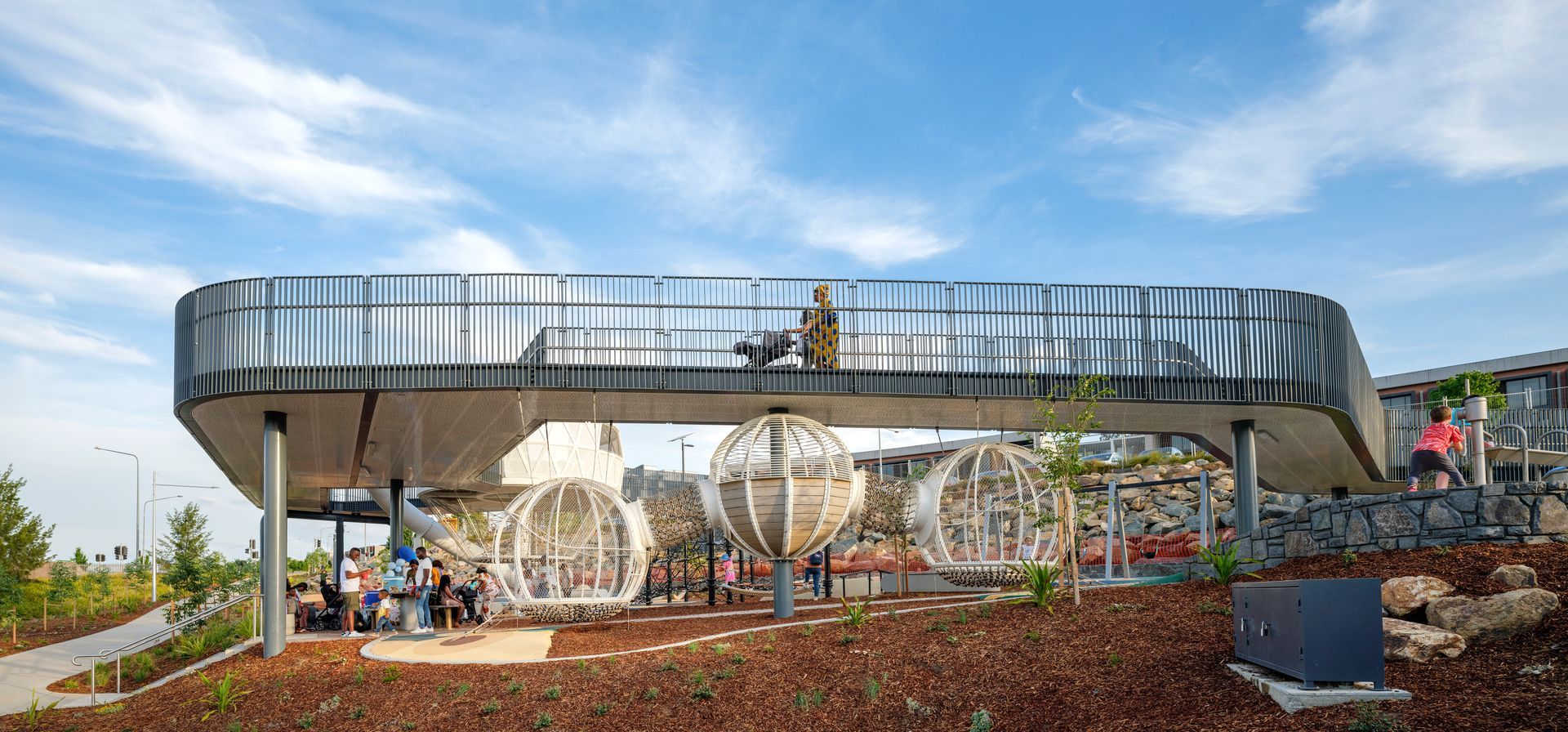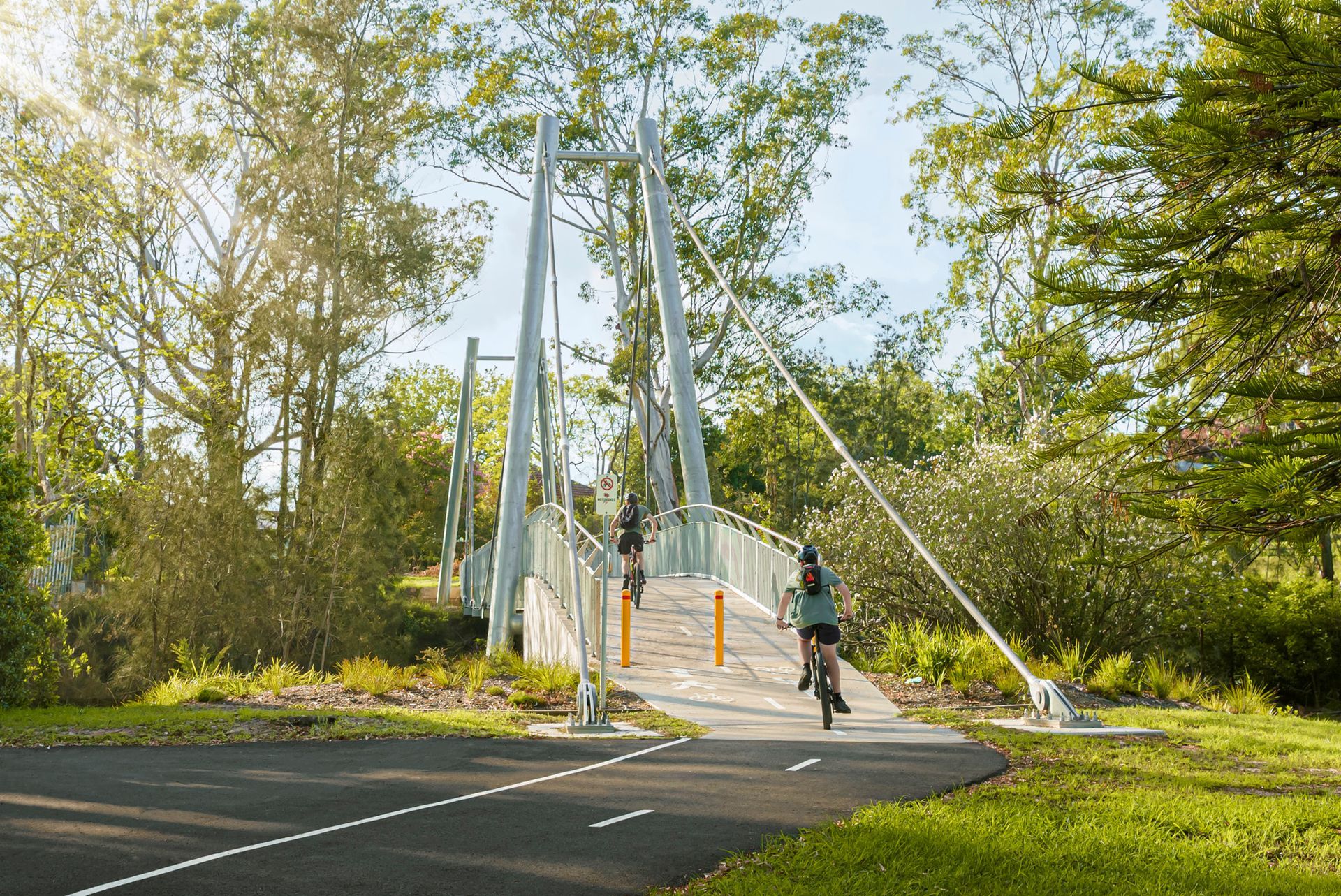Everyone Can Play
First published as a draft guideline in November 2017, and refined through widespread community and industry consultation, the introduction of the NSW Government’s ‘Everyone Can Play’ program is widely seen as a watershed public policy moment for inclusive play in Australia. We recently caught up with Fiona Morrison, Director of Open Space, NSW Department of Planning, Industry and Environment, to learn more about the origins of the benchmark community program, and its continued evolution.


FWD>Thinking: It’s great to speak with you, Fiona. Can you please provide a little background as to how the ‘Everyone Can Play’ program first came about?
FIONA MORRISON: Our open spaces and public areas are places where all should be able to come together to enjoy the outdoors, company of friends and family and to enjoy an active and healthy lifestyle.
The Everyone Can Play (ECP) program was announced in 2017 in response to community feedback for the need for more high-quality play opportunities that are inclusive for people of all ages, abilities and backgrounds. The NSW Government believes playspaces are the centre of communities and that everyone should experience the joys and benefits of play and, to realise this, guidance of the planning, design and management of playspaces is needed. This led to the creation of the Everyone Can Play Guideline to educate and support councils to deliver inclusive playspaces in their local communities.
Following this, in 2018, a $20 million grant program was announced to support the creation of inclusive playspaces across NSW in partnership with councils. Over the past three years, the Department of Planning, Industry and Environment has been implementing the Everyone Can Play program with more than 100 inclusive playspaces created in NSW.
FWD: What are the program’s objectives?
FM: The Everyone Can Play program is about creating playspaces where everyone can come together and play, no matter their age, ability or background. Our short-term focus was on raising awareness of the need for inclusive playspaces and to provide tools, guidance and support for planners, designers and managers to educate them on the importance and role of inclusive playspaces and how to create them.
Longer term, the program aims to achieve lasting change through embedding the program objectives within strategic documents (such as councils’ playspace strategies) and through attitudinal shifts within the minds of industry, designers, planners and managers of open space. We also see the expansion of ECP principles (Can I get there? Can I play? Can I Stay?) to the design and delivery of all public spaces

FWD: How well has the program has been embraced, both philosophically and practically, by councils, developers and LAs across NSW?
FM: The program has been embraced well by councils and industry. We’re seeing a shift from ‘playground’ thinking to ‘playspace’ thinking, from looking at just the play equipment to looking at the space holistically and designing for children, parents and carers who will use the space. This includes consideration of the entry experience, connection to amenities and how the overall site can contribute to the users’ experiences. Designers are thinking more of playspaces as fully integrated and vital pieces of public open space, rather than as discrete isolated areas. But there’s still more to be done to embed the principles of Everyone Can Play across NSW, especially as trends in play change and evolve, such as water and nature play. The Department is currently expanding the ECP Guidelines to include sections on the planning and design of inclusive nature and water playspaces.
FWD: What has been the wider reaction? Do you feel NSW communities see and understand the value of promoting inclusive play?
FM: The program has been really well embraced, and I think that’s a testament to the highly collaborative development of the ECP Guidelines, which involved more than 50 different stakeholders ranging from Landscape Architects to disability advocates and council representatives. Each one of these individuals is an ambassador for inclusive play and has brought the directions and thinking of the Guidelines back to their respective organisations and their wider networks. A well-designed inclusive playspace is just a great playspace that is demonstrated by a diversity of users. It’s almost easier to notice a playspace where something is lacking, or where barriers are present that exclude certain users.
FWD: Since the Program first began, what have been some of your key learnings?
FM: One of the key learnings for me is that small changes can make a big difference to the inclusiveness of a space; whether it’s a park bench with arm and back rests making it more comfortable and supportive for seniors, or the inclusion of supportive high-back toddler seats with hand holds that provide extra support for those who need it. Through the design review process as part of the ECP grant program, we’ve seen where designers and councils are struggling with the application of the principles. This process offers support and guidance that helps the playspace become more inclusive. This has been very informative as we expand the program into new areas of focus.
We know one of the challenges many local governments face is limited budgets. We want the program to show how you can make a big impact by incorporating some simple changes. We’re currently working on a demonstration project with Bathurst Regional Council that looks specifically at how to make the biggest impacts within a limited budget. We’ll be sharing the process we follow and outcomes of this project with councils and industry later in 2021.
FWD: Which areas have been really strong? Where do you feel there are opportunities to do things even better?
FM: Shade is an important element for any playspace, particularly in Australia, and well-designed shade contributes greatly to the ‘Can I Play and Stay’ principles. Many projects we’ve overseen have really embraced improvements to shade through a range of measures such as introduction of shade sails, tree planting and better utilisation of existing trees on site.
Designing and planning for inclusive play is not about ticking a box, it’s a change in thinking that looks for the opportunities of a site and creative solutions to overcome constraints. Inclusive design does not cost more money. What it does require is a more concerted focus on users of all ages, abilities and backgrounds during the design process and a focus beyond the play equipment to be installed. There’s always more we can do to design for all members of our community.
FWD: How many projects have actually been delivered under the Everyone Can Play program to date?
FM: So far through the ECP grant program, $15 million has been allocated to 108 playspace projects. This includes the recently announced recipients of the 2020-21 ECP grant round which saw the allocation of $7 million worth of funding across 37 playspace projects in 31 councils. This includes two new inclusive playspaces that will be delivered in partnership with the Department as demonstration regional inclusive playspace projects to showcase recovery and resilience in bushfire and drought-affected communities.
FWD: Just to finish, if you share one final message about inclusive play, what would it be?
FM: Play really is a fundamental human right. Everyone should be able to experience the joy that comes from play no matter their age, ability or background. Playspaces are places where communities come together, interact and enjoy the outdoors and we want this experience to be available to everyone. Play is not just for children; it is for everyone.
Like to know more?
You can download the NSW Government’s official Everyone Can Play Consultation Report
here.
More from Fleetwood Files.
Explore
Certifications
Environmental Management : ISO14001
Quality Management : ISO 9001
OHS Management : ISO 45001
All Rights Reserved | Fleetwood Urban | Privacy Policy





